Nearer to Kolob
Hieing to Kolob has now moved to a new address. Please update your sidebars and feeders!
http://kolobiv.blogspot.com
I sure hope to see all my old friends over there, and many new ones, too!
God is high in his heaven. But since I can't get there, I shall hie to Kolob. Reaching just as high as I can...
Hieing to Kolob has now moved to a new address. Please update your sidebars and feeders!
It sure is a good thing they changed that Temple Recommend Question--you know the one I'm talking about: Do you affiliate with any group or individual whose teachings or practices are contrary to or oppose those accepted by The Church of Jesus Christ of Latter-day Saints? They used to ask you if you sympathized with such groups, and I always had to answer "yes." (Never kept me from getting my recommend, btw.)
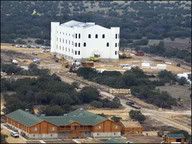 That's why I've followed with interest the building of the YFZ (Yearning for Zion) compound in Eldorado, Texas. (Pics here.) Even the name of the place breaks my heart. It's taken from a song written by FLDS leader Warren Jeffs. I am disposed to believe that this is a group of people who yearns for Zion. They are willing to put their earthly lives and interests on the line for their religious beliefs. One member writes:
That's why I've followed with interest the building of the YFZ (Yearning for Zion) compound in Eldorado, Texas. (Pics here.) Even the name of the place breaks my heart. It's taken from a song written by FLDS leader Warren Jeffs. I am disposed to believe that this is a group of people who yearns for Zion. They are willing to put their earthly lives and interests on the line for their religious beliefs. One member writes: "I wonder why people think Plural Marriage is a sin. I know for myself that it is a correct principle and must be lived to attain the highest degree of glory in the Celestial Kingdom. I also know that most people I have known that enter the principle, do not live it correctly. So it is not for everyone. So why is it so bad to some people, for a man to claim two women as wives, take care of them and treat them as wives in every sense of the word, and for some reason it is not quite as bad for a man to have a wife and a mistress? Or is it? To me, THAT is awful."
"I don't know of a better reason, to live it, than that it is a commandment of God. If is was not a commandment of God, and that was my desire (to keep the commandments of God) then I am sure I would not choose to. I believe that every person must live according to the light and knowlege they have, in order to come to God at the Judgment day and have no regrets."
"You have been fed a steady diet of bull puckey for long enough, why don't you try something else, your taste buds would enjoy it I'm sure. A strong mind is one that thinks for itself, not believes every malcontent filthy liar and every bit of media spin. Nobody, and I mean nobody is being raped!! I promise you that the 6 month old babies aren't being raped. I know of one 14 year old marriage, but in general the girls are older than that, you can keep bringing that up for your purpose of sensationalism as long as you'd like, it still doesn't make it the truth. I also know that every person is given a choice or asked if they are willing, they are not forced into the marriages, and you can go ahead and give us your drivel about brainwashing all you want to, I know I've been there, I wasn't brain washed, I loved what I lived... I made a choice, I was asked and I made that choice, so you will say I was brainwashed. Hogwash. Free will and choice, and a beautiful choice at that, I would way rather be married to a wonderful man that has matured and mellowed, than a young know it all buck... The people of the United States are the ones who are brain washed, with all the TV, sports... Only the Lord God of Heaven has the right to judge us, you don't and I don't have the right to judge you. The United States of America is supposed to be where you can practice what you believe..."
Labels: marriage, morality, polygamy, women's issues
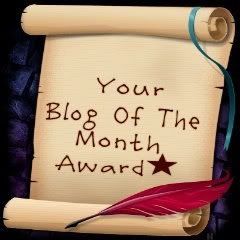 My pick for Blog of the Month for the month of March is one that has only been around for three months:
My pick for Blog of the Month for the month of March is one that has only been around for three months:Labels: Blog of the Month

Labels: about me, conferences, women's issues
This is not an April Fool's joke! No, readers, this is another one for Women's History Month.


Labels: women, women's issues
Part 8 of a series on Martin Harris and the Anthon Transcript
"The first account of Whitmer's possession of this document was made by Edward Stevenson (later a member of the First Presidency of Seventies) who visited Whitmer in 1871 and made a copy of the document. Later, the March 25, 1881, edition of the Richmond (Missouri) Conservator reported that Whitmer had the original transcript, a claim which Whitmer made again in 1887 when he wrote, "I have in my possession the original paper containing some of the characters transcribed from one of the golden plates, which paper Martin Harris took to Professor Anthon of New York. . . ." In 1884 a committee of the RLDS Church conversed with Whitmer and were shown the transcript. Unfortunately we lack any further information regarding how, when, or why Whitmer acquired this document. Though inconclusive, it is of interest to note that Martin Harris neither confirmed nor denied Whitmer's claim. [1]The RLDS transcript was given to the Church in 1903 by the heirs of David Whitmer, fifteen years after his death in 1888. In 1941, Frederick Smith wrote describing the Caractors Document: "the paper itself is old, and of the same quality and appearance of the paper of the [Book of Mormon] manuscript and of early Revelation, manuscripts undoubtedly made before 1833." [2]

 This discovery explains some things, and brings up more questions. First, Anthon's letter describes the characters as "crooked." He says that "Greek and Hebrew letters, crosses and flourishes, Roman letters inverted or placed sideways, were arranged in perpendicular columns." For example, we see letters similar to the Roman "H," "T," "V," "C," and "U," and if they were viewed in columns, they would appear to be "placed sideways." But the question might be raised: was the slip of paper we know as the "Caractors Document" written in columns, with the label "Caractors" written as an afterthought? Or had Martin Harris and Charles Anthon looking at the document turned the wrong way? Since Joseph was not there to instruct them, this is a possibility.
This discovery explains some things, and brings up more questions. First, Anthon's letter describes the characters as "crooked." He says that "Greek and Hebrew letters, crosses and flourishes, Roman letters inverted or placed sideways, were arranged in perpendicular columns." For example, we see letters similar to the Roman "H," "T," "V," "C," and "U," and if they were viewed in columns, they would appear to be "placed sideways." But the question might be raised: was the slip of paper we know as the "Caractors Document" written in columns, with the label "Caractors" written as an afterthought? Or had Martin Harris and Charles Anthon looking at the document turned the wrong way? Since Joseph was not there to instruct them, this is a possibility. Well, dear readers, I leave you with my impressions that the characters with which we are by now familiar were those viewed by Charles Anthon in 1828. Over the years, these characters have become well-known to members of the Church. In 1980 the Church came out with a gold-cover edition of the Book of Mormon which had the letters from the Caractors Document inscribed in black lettering. I had one in my possession until this last move. :( These characters and the story of the Anthon transcript fascinate us because, since we do not have the gold plates to handle and touch, they represent the most concrete and tangible evidence we have. Of course, a testimony of the Book of Mormon will never depend on evidence, but our mortal minds do appreciate what little there is.
Well, dear readers, I leave you with my impressions that the characters with which we are by now familiar were those viewed by Charles Anthon in 1828. Over the years, these characters have become well-known to members of the Church. In 1980 the Church came out with a gold-cover edition of the Book of Mormon which had the letters from the Caractors Document inscribed in black lettering. I had one in my possession until this last move. :( These characters and the story of the Anthon transcript fascinate us because, since we do not have the gold plates to handle and touch, they represent the most concrete and tangible evidence we have. Of course, a testimony of the Book of Mormon will never depend on evidence, but our mortal minds do appreciate what little there is.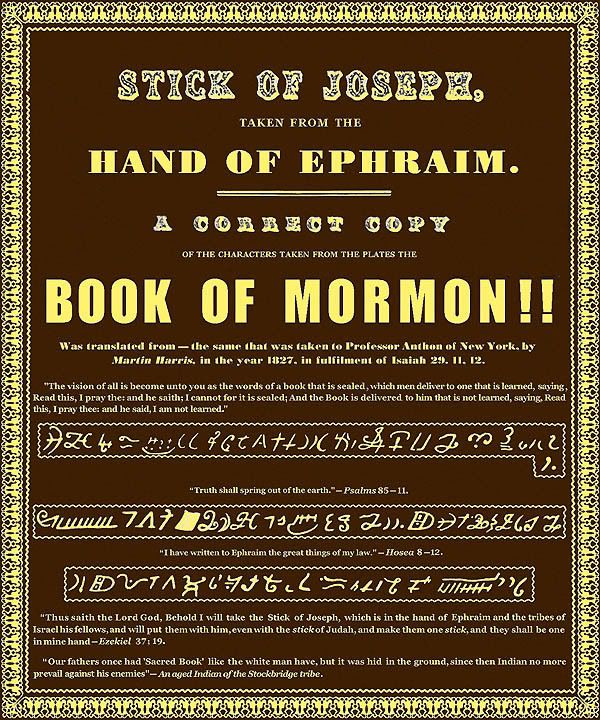 [3] BYU Studies, vol.20, no.4, p.325. Twice in late 1844, after the Prophet's martyrdom, portions of these symbols were published as characters that Joseph Smith had copied from the gold plates. Characters appeared in the December 21 issue of the Mormon newspaper The Prophet. Also, (right, click to enlarge) in 1844 the Latter-day Saints published a broadside with the title "Stick of Joseph" which contained these same characters copied from the plates.
[3] BYU Studies, vol.20, no.4, p.325. Twice in late 1844, after the Prophet's martyrdom, portions of these symbols were published as characters that Joseph Smith had copied from the gold plates. Characters appeared in the December 21 issue of the Mormon newspaper The Prophet. Also, (right, click to enlarge) in 1844 the Latter-day Saints published a broadside with the title "Stick of Joseph" which contained these same characters copied from the plates. Labels: Anthon transcript, Book of Mormon, Mormon history, scripture
Part 7 of a series on Martin Harris and the Anthon Transcript
Labels: Anthon transcript, Joseph Smith
Part 6 of a series on Martin Harris and the Anthon Transcript
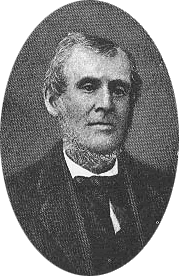 Can you believe I am still blogging about the Anthon transcript? I don't know why this has intrigued me so much. Much of this information is not new to me, but I haven't seriously considered it in the past, or tried to come to any conclusions. If you're still reading me, here are some concluding ideas I've had as I've looked at the whole incident.
Can you believe I am still blogging about the Anthon transcript? I don't know why this has intrigued me so much. Much of this information is not new to me, but I haven't seriously considered it in the past, or tried to come to any conclusions. If you're still reading me, here are some concluding ideas I've had as I've looked at the whole incident.And the vision of all is become unto you as the words of a book that is sealed, which men deliver to one that is learned, saying, Read this, I pray thee: and he saith, I cannot; for it is sealed: And the book is delivered to him that is not learned, saying, Read this, I pray thee: and he saith, I am not learned. Wherefore the Lord said, Forasmuch as this people draw near me with their mouth, and with their lips do honour me, but have removed their heart far from me, and their fear toward me is taught by the precept of men: Therefore, behold, I will proceed to do a marvellous work among this people, even a marvellous work and a wonder: for the wisdom of their wise men shall perish, and the understanding of their prudent men shall be hid.
Labels: Anthon transcript, Book of Mormon, Mormon history, scripture
Part 5 of a series on Martin Harris and the Anthon Transcript
Labels: Anthon transcript, Book of Mormon, Mormon history
 The Easters of my childhood could not be more different than those of my children. As a "Preacher's Kid," those Sundays in early spring of the '60's and '70's recall new patent leather shoes, pastel dresses, hats, and little white gloves. Easter lilies adorned the house, with the largest one placed on my grandmother's handmade doily on the grand piano in the front room. My father had written a special sermon which we would all discuss at the table that evening when we ate our traditional ham dinner. I sat sedately on the pew with my knees together, and head bowed. It was a special, awe-filled, reverent day, and I felt great joy well up in my heart as we sang the Protestant Easter hymns. "Christ the Lord is Ris'n Today" was twice as fast and toe-tapping as any Mormon ward has ever performed it, and then, my personal favorite:
The Easters of my childhood could not be more different than those of my children. As a "Preacher's Kid," those Sundays in early spring of the '60's and '70's recall new patent leather shoes, pastel dresses, hats, and little white gloves. Easter lilies adorned the house, with the largest one placed on my grandmother's handmade doily on the grand piano in the front room. My father had written a special sermon which we would all discuss at the table that evening when we ate our traditional ham dinner. I sat sedately on the pew with my knees together, and head bowed. It was a special, awe-filled, reverent day, and I felt great joy well up in my heart as we sang the Protestant Easter hymns. "Christ the Lord is Ris'n Today" was twice as fast and toe-tapping as any Mormon ward has ever performed it, and then, my personal favorite:
Low in the grave He lay, Jesus my Savior,
Waiting the coming day, Jesus my Lord!
Refrain
Vainly they watch His bed, Jesus my Savior;
Vainly they seal the dead, Jesus my Lord!
Refrain
Death cannot keep its Prey, Jesus my Savior;
He tore the bars away, Jesus my Lord!
Refrain:
Up from the grave He arose,
With a mighty triumph o’er His foes,
He arose a Victor from the dark domain,
And He lives forever, with His saints to reign.
He arose! He arose!
Hallelujah! Christ arose!
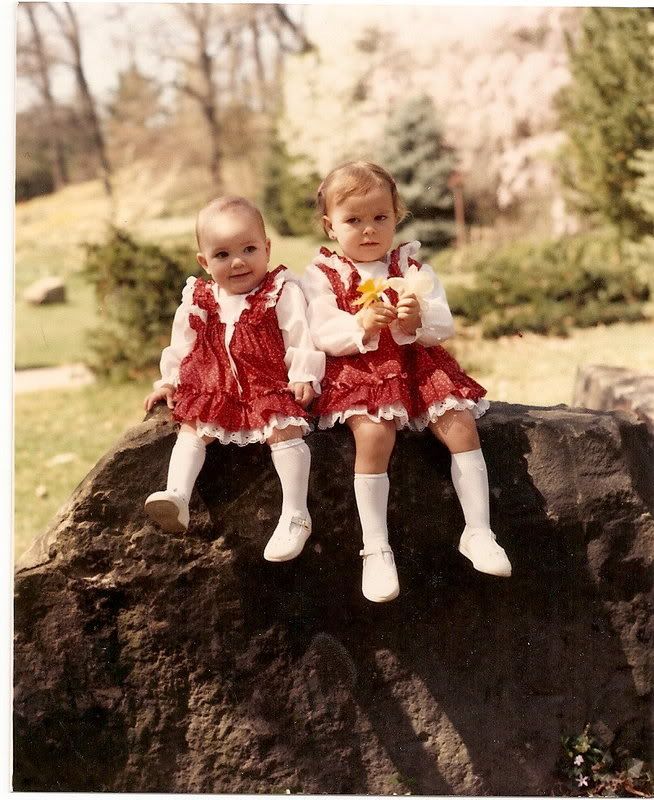 Fast forward to the 1980's and '90's. BiV tries valiantly to recall the Easters of her youth as she sews 7 matching Easter dresses every year, and volunteers to write Easter cantatas for Sacrament meetings. But most years Easter falls on General Conference days, and we lie around the house in PJ's, munching on chocolate bunnies and putting jellybeans on Conference Bingo cards while watching the talking heads. Frustration mounted through these years. I wondered how we could come from such a wonderful musical tradition with the Mormon Tabernacle Choir, and be satisfied with Ward Choirs who thought an acceptable Easter production was singing "He is Risen" with the men singing the first verse, the women singing the second, and all joining together on the third. Talks and lessons went on in the usual schedule, sometimes with nary a mention of the resurrection. Mormons don't do JOY on Easter, I realized.
Fast forward to the 1980's and '90's. BiV tries valiantly to recall the Easters of her youth as she sews 7 matching Easter dresses every year, and volunteers to write Easter cantatas for Sacrament meetings. But most years Easter falls on General Conference days, and we lie around the house in PJ's, munching on chocolate bunnies and putting jellybeans on Conference Bingo cards while watching the talking heads. Frustration mounted through these years. I wondered how we could come from such a wonderful musical tradition with the Mormon Tabernacle Choir, and be satisfied with Ward Choirs who thought an acceptable Easter production was singing "He is Risen" with the men singing the first verse, the women singing the second, and all joining together on the third. Talks and lessons went on in the usual schedule, sometimes with nary a mention of the resurrection. Mormons don't do JOY on Easter, I realized. 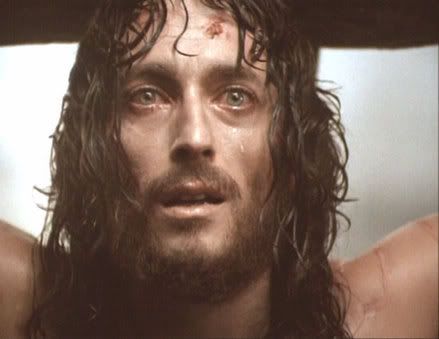 At that moment, I realized in a visceral way that Jesus was a historical, real, vital person who had actually lived and walked around on this earth. People had seen him, and touched him, and listened to his message. I felt a conviction that he had risen from the dead, as the scriptures relate. I thought it not impossible that he had physically appeared to a farm boy in New York in answer to a sincere prayer. It was the strongest testimony of the reality of the Savior and of the restoration of the gospel that I had yet experienced.
At that moment, I realized in a visceral way that Jesus was a historical, real, vital person who had actually lived and walked around on this earth. People had seen him, and touched him, and listened to his message. I felt a conviction that he had risen from the dead, as the scriptures relate. I thought it not impossible that he had physically appeared to a farm boy in New York in answer to a sincere prayer. It was the strongest testimony of the reality of the Savior and of the restoration of the gospel that I had yet experienced. Labels: about me, Savior, spirituality
Part 4 of a series on Martin Harris and the Anthon Transcript
New York, Feb. 17, 1834
Dear Sir -
I received this morning your favor of the 9th instant, and lose no time in making a reply. The whole story about my having pronounced the Mormonite inscription to be "reformed Egyptian hieroglyphics" is perfectly false. Some years ago, a plain, and apparently simple-hearted farmer, called upon me with a note from Dr. Mitchell of our city, now deceased, requesting me to decypher, if possible, a paper, which the farmer would hand me, and which Dr. M. confessed he had been unable to understand. Upon examining the paper in question, I soon came to the conclusion that it was all a trick, perhaps a hoax. When I asked the person, who brought it, how he obtained the writing, he gave me, as far as I can now recollect, the following account: A "gold book," consisting of a number of plates of gold, fastened together in the shape of a book by wires of the same metal, had been dug up in the northern part of the state of New York, and along with the book an enormous pair of "gold spectacles"! These spectacles were so large, that, if a person attempted to look through them, his two eyes would have to be turned towards one of the glasses merely, the spectacles in question being altogether too large for the breadth of the human face. Whoever examined the plates through the spectacles, was enabled not only to read them, but fully to understand their meaning. All this knowledge, however, was confined at that time to a young man, who had the trunk containing the book and spectacles in his sole possession. This young man was placed behind a curtain, in the garret of a farm house, and, being thus concealed from view, put on the spectacles occasionally, or rather, looked through one of the glasses, decyphered the characters in the book, and, having committed some of them to paper, handed copies from behind the curtain, to those who stood on the outside. Not a word, however, was said about the plates having been decyphered "by the gift of God." Every thing, in this way, was effected by the large pair of spectacles. The farmer added, that he had been requested to contribute a sum of money towards the publication of the "golden book," the contents of which would, as he had been assured, produce an entire change in the world and save it from ruin. So urgent had been these solicitations, that he intended selling his farm and handing over the amount received to those who wished to publish the plates. As a last precautionary step, however, he had resolved to come to New York, and obtain the opinion of the learned about the meaning of the paper which he brought with him, and which had been given him as a part of the contents of the book, although no translation had been furnished at the time by the young man with the spectacles. On hearing this odd story, I changed my opinion about the paper, and, instead of viewing it any longer as a hoax upon the learned, I began to regard it as part of a scheme to cheat the farmer of his money, and I communicated my suspicions to him, warning him to beware of rogues. He requested an opinion from me in writing, which of course I declined giving, and he then took his leave carrying the paper with him. This paper was in fact a singular scrawl. It consisted of all kinds of crooked characters disposed in columns, and had evidently been prepared by some person who had before him at the time a book containing various alphabets. Greek and Hebrew letters, crosses and flourishes, Roman letters inverted or placed sideways, were arranged in perpendicular columns, and the whole ended in a rude delineation of a circle divided into various compartments, decked with various strange marks, and evidently copied after the Mexican Calender given by Humboldt, but copied in such a way as not to betray the source whence it was derived. I am thus particular as to the contents of the paper, inasmuch as I have frequently conversed with my friends on the subject, since the Mormonite excitement began, and well remember that the paper contained any thing else but "Egyptian Hieroglyphics." Some time after, the same farmer paid me a second visit. He brought with him the golden book in print, and offered it to me for sale. I declined purchasing. He then asked permission to leave the book with me for examination. I declined receiving it, although his manner was strangely urgent. I adverted once more to the roguery which had been in my opinion practised upon him, and asked him what had become of the gold plates. He informed me that they were in a trunk with the large pair of spectacles. I advised him to go to a magistrate and have the trunk examined. He said the "curse of God" would come upon him should he do this. On my pressing him, however, to pursue the course which I had recommended, he told me that he would open the trunk, if I would take the "curse of God" upon myself. I replied that I would do so with the greatest willingness, and would incur every risk of that nature, provided I could only extricate him from the grasp of rogues. He then left me.
I have thus given you a full statement of all that I know respecting the origin of Mormonism, and must beg you, as a personal favor, to publish this letter immediately, should you find my name mentioned again by these wretched fanatics.
Yours respectfully, CHAS. ANTHON.
New York, April 3d, 1841.
Rev. and Dear Sir:
I have often heard that the Mormons claimed me for an auxiliary, but, as no one, until the present time, has ever requested from me a statement in writing, I have not deemed it worth while to say anything publicly on the subject. What I do know of the sect relates to some of the early movements; and as the facts may amuse you, while they will furnish a satisfactory answer to the charge of my being a Mormon proselyte, I proceed to lay them before you in detail.
Many years ago, the precise date I do not now recollect, a plain looking countryman called upon me with a letter from Dr. Samuel L. Mitchell requesting me to examine, and give my opinion upon, a certain paper, marked with various characters, which the Doctor confessed he could not decypher, and which the bearer of the note was very anxious to have explained. A very brief examination of the paper convinced me that it was a mere hoax, and a very clumsy one too. The characters were arranged in columns, like the Chinese mode of writing, and presented the most singular medley that I ever beheld. Greek, Hebrew and all sorts of letters, more or less distorted, either through unskilfulness or from actual design, were intermingled with sundry delineations of half moons, stars, and other natural objects, and the whole ended in a rude representation of the Mexican zodiac. The conclusion was irresistible, that some cunning fellow had prepared the paper in question for the purpose of imposing upon the countryman who brought it, and I told the man so without any hesitation. He then proceeded to give me the history of the whole affair, which convinced me that he had fallen into the hands of some sharper, while it left me in great astonishment at his simplicity.
The countryman told me that a gold book had been recently dug up in the western or northern part (I forget which), of our state, and he described this book as consisting of many gold plates, like leaves, secured by a gold wire passing through the edges of each, just as the leaves of a book are sewed together, and presented in this way the appearance of a volume. Each plate, according to him, was inscribed with unknown characters, and the paper which he handed me, a transcript of one of these pages. On my asking him by whom the copy was made, he gravely stated, that along with the golden book there had been dug up a very large pair of spectacles! so large in fact that if a man were to hold them in front of his face, his two eyes would merely look through one of the glasses, and the remaining part of the spectacles would project a considerable distance sideways! These spectacles possessed, it seems a very valuable property, of enabling any one who looked through them, (or rather through one of the lenses,) not only to decypher the characters on the plates, but also to comprehend their exact meaning, and be able to translate them!! My informant assured me that this curious property of the spectacles had been actually tested, and found to be true. A young man, it seems, had been placed in the garret of a farm-house, with a curtain before him, and having fastened the spectacles to his head, had read several pages in the golden book, and communicated their contents in writing to certain persons stationed on the outside of the curtain. He had also copied off one page of the book in the original character, which he had in like manner handed over to those who were separated from him by the curtain, and this copy was the paper which the countryman had brought with him. As the golden book was said to contain very great truths, and most important revelations of a religious nature, a strong desire had been expressed by several persons in the countryman's neighbourhood, to have the whole work translated and published. A proposition had accordingly been made to my informant, to sell his farm, and apply the proceeds to the printing of the golden book, and the golden plates were to be left with him as security until he should be reimbursed by the sale of the work. To convince him more clearly that there was no risk whatever in the matter, and that the work was actually what it claimed to be, he was told to take the paper, which purported to be a copy of one of the pages of the book, to the city of New York, and submit it to the learned in that quarter, who would soon dispel all his doubts, and satisfy him as to the perfect safety of the investment. As Dr. Mitchell was our "Magnus Apollo" in those days, the man called first upon him; but the Doctor, evidently suspecting some trick, declined giving any opinion about the matter, and sent the countryman down to the college, to see, in all probability what the "learned pundits" in that place would make of the affair. On my telling the bearer of the paper that an attempt had been made to impose on him and defraud him of his property, he requested me to give him my opinion in writing about the paper which he had shown to me. I did so without hesitation, partly for the man's sake, and partly to let the individual "behind the curtain" see that his trick was discovered. The import of what I wrote was, as far as I can now recollect, simply this, that the marks in the paper appeared to be merely an imitation of various alphabetical characters, and had, in my opinion, no meaning at all connected with them. The countryman then took his leave, with many thanks, and with the express declaration that he would in no shape part with his farm, or embark in the speculation of printing the golden book.
The matter rested here for a considerable time, until one day, when I had ceased entirely to think of the countryman and his paper, this same individual, to my great surprise, paid me a second visit. He now brought with him a duodecimo volume, which he said was a translation into English of the "Golden Bible." He also stated, that notwithstanding his original determination not to sell his farm, he had been induced evidently to do so, and apply the money to the publication of the book, and had received the golden plates as a security for payment. He begged my acceptance of the volume, assuring me that it would be found extremely interesting, and that it was already "making great noise" in the upper part of the state. Suspecting now that some serious trick was on foot, and that my plain looking visitor might be in fact a very cunning fellow I declined his present, and merely contented myself with a slight examination of the volume while he stood by. The more I declined receiving it, however, the more urgent the man became in offering the book, until at last I told him plainly, that if he left the volume, as he said he intended to do, I should most assuredly throw it after him as he departed. I then asked him how he could be so foolish as to sell his farm and engage in this affair; and requested him to tell me if the plates were really of gold. In answer to this latter inquiry, he said, that he had never seen the plates themselves, which were carefully locked up in a trunk, but that he had the trunk in his possession. I advised him by all means to open the trunk and examine its contents, and if the plates proved to be of gold, which I did not believe at all, to sell them immediately. His reply was, that. if he opened the trunk, the "curse of heaven would descend upon him and his children.' "However," added he, "I will agree to open it, provided you take the 'curse of Heaven' upon yourself, for having advised me to the step." I told him I was perfectly willing to do so, and begged he would hasten home and examine the trunk, for he would find that he had been cheated. He promised to do as I recommended, and left me, taking his book with him. I have never seen him since.
Such is a plain statement of all I know respecting the Mormons. My impression now is, that the plain looking countryman was none other than the prophet Smith himself, who assumed an appearance of great simplicity in order to entrap me, if possible, into some recommendation of his book. That the prophet aided me by his inspiration, in interpreting the volume, is only one of the many amusing falsehoods which the Mormonites utter relative to my participation in their doctrines. Of these doctrines I know nothing whatever, nor have I ever heard a single discourse from any of their preachers, although I have often felt a strong curiosity to become an auditor, since my friends tell me that they frequently name me in their sermons, and even go so far as to say that I am alluded to in the prophecies of Scripture!
If what I have here written shall prove of any service in opening the eyes of some of their deluded followers to the real designs of those who profess to be the apostles of Mormonism, it will afford me satisfaction equalled, I have no doubt, only by that which you yourself will feel on this subject.
I remain, very respectfully and truly, your friend,
CHAS. ANTHON.
Labels: Anthon transcript, Book of Mormon, Joseph Smith, Mormon history, scripture, Sunday School
Part 3 of a series on Martin Harris and the Anthon Transcript
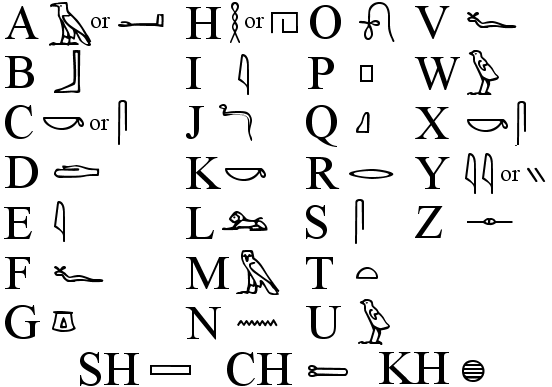



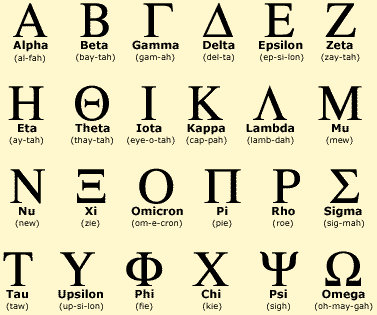
Labels: Anthon transcript, Book of Mormon, Joseph Smith, Mormon history, scripture, Sunday School
Part 2 of a series on Martin Harris and the Anthon Transcript
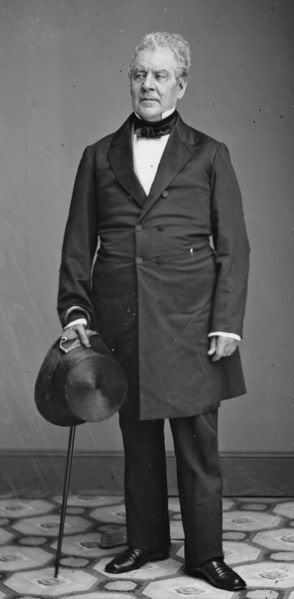 Luther Bradish was a special trade emissary of U.S. Secretary of State John Quincy Adams in 1820. He was sent to Asia as a semi-official agent on a special mission to the Sublime Porte in Constantinople concerning an American trade treaty with the Ottoman Empire, during which time he learned Arabic. Following his stay in Constantinople, Mr. Bradish was the guest of the celbrated Mohammed Ali Pasha, viceroy of Egypt, who provided him an escort to Jerusalem. It is speculated that he may have been the first American to visit the Holy City. He later traveled throughout Turkey, Egypt, Syria, Tunisia, and Europe where he studied the "language, manners, and antiquities" of those nations. Other travels included Smyrna, Malta and Gibraltar, the West Indies, South America, England, Scotland, Ireland, the uper cataracts of the Nile, the Red Sea, Beirut, Adrianople in Bulgaria, Hungary, Vienna, Italy, Switzerland, Germany, France, Holland, Denmark, and even Moscow and St Petersburg in Russia. Having been elected to the state legislature in Albany as a Whig in 1827, Bradish lived at Utica in 1828. Harris was aware of Bradish's travels and may even have known Bradish himself since Bradish had relatives around Palmyra. [3] It is believed that Harris went to see him in his home in Utica, a stopping place on the Erie Canal, proceeding from there to Albany. [4] Despite Bradish's experiences with the culture and languages of the Middle East, he was apparently unable to venture an opinion on the characters. He told Harris that there was not enough "to make anything out."
Luther Bradish was a special trade emissary of U.S. Secretary of State John Quincy Adams in 1820. He was sent to Asia as a semi-official agent on a special mission to the Sublime Porte in Constantinople concerning an American trade treaty with the Ottoman Empire, during which time he learned Arabic. Following his stay in Constantinople, Mr. Bradish was the guest of the celbrated Mohammed Ali Pasha, viceroy of Egypt, who provided him an escort to Jerusalem. It is speculated that he may have been the first American to visit the Holy City. He later traveled throughout Turkey, Egypt, Syria, Tunisia, and Europe where he studied the "language, manners, and antiquities" of those nations. Other travels included Smyrna, Malta and Gibraltar, the West Indies, South America, England, Scotland, Ireland, the uper cataracts of the Nile, the Red Sea, Beirut, Adrianople in Bulgaria, Hungary, Vienna, Italy, Switzerland, Germany, France, Holland, Denmark, and even Moscow and St Petersburg in Russia. Having been elected to the state legislature in Albany as a Whig in 1827, Bradish lived at Utica in 1828. Harris was aware of Bradish's travels and may even have known Bradish himself since Bradish had relatives around Palmyra. [3] It is believed that Harris went to see him in his home in Utica, a stopping place on the Erie Canal, proceeding from there to Albany. [4] Despite Bradish's experiences with the culture and languages of the Middle East, he was apparently unable to venture an opinion on the characters. He told Harris that there was not enough "to make anything out."  Samuel Mitchill's early studies were in the classics. After receiving his medical and scientific training in New York and Edinburgh, he was appointed to the chair of natural history, chemistry, and agriculture at Columbia College in 1792. In addition to teaching, he was twice in the U.S. House of Representatives, 1801-1804 and 1810-1813; a senator from 1804-1809; professor, College of Physicians and Surgeons in New York, 1807-1826; and an organizer and a vice-president of Rutgers Medical College during its brief existence, 1826-1830. When book or product promoters of that era wanted the ultimate testimonial in their advertisements, the most auspicious name they sought was that of Samuel Latham Mitchill, a walking encyclopedia and "chaos of knowledge" whose very name could silence critics and command awe & respect. It was "Dr. Mitchill" to whom Americans turned for the final word on everything from ancient American ruins to natural history, medicine or agriculture. In the upstate New York farming journal, "The Plough Boy" - just the sort of publication a prosperous Palmyra farmer like Martin Harris would read - the references to "Dr. Mitchill" and his pronouncements are almost countless, including numerous letters to and from Mitchill (together with occasional lengthy addresses) whenever a final authority on some matter was required. "There is not in the United States," wrote the editor, "a more scientific man than Dr. Mitchill - there is not, perhaps, a more useful man. . . . whose amiable disposition in connection with his real science, his ardent thirst for philosophic attainments, and his invaluable labours in the vineyard of human improvement, render him at once the ornament of his country, and the benefactor of mankind." [5] Samuel Mitchill would also have been a name known to Harris for his service in state and national legislatures from 1791 through 1813. He was also considered learned in science, history, higher education, medicine, and land development. Mitchill's name appeared as a recognized authority in Palmyra's newspapers at least fifteen times between 1821 and 1826. [6] Mitchill translated books from the Spanish, German, Latin, Dutch. He also could read Greek and decipher ancient Oriental tongues. [7] Dr. Mitchill was a noted antiquarian who studied Egyptian and Babylonian artifacts. He had a great interest in the history of the American Indian. Dating from his appointment in 1798 as a commissioner to purchase land in western New York from the Six (Indian) Nations, he was known as an authority on native Americans. His speculations on their origins appeared in several publications before 1820. [8] Martin Harris soon discovered that Mitchill's expertise on ancient America was of no help in identifying the characters from the gold plates. Mitchill declined giving any opinion about the matter, but did write a letter of introduction referring Martin Harris to Professor Charles Anthon whom he thought might be able to assist in the endeavor. [9]
Samuel Mitchill's early studies were in the classics. After receiving his medical and scientific training in New York and Edinburgh, he was appointed to the chair of natural history, chemistry, and agriculture at Columbia College in 1792. In addition to teaching, he was twice in the U.S. House of Representatives, 1801-1804 and 1810-1813; a senator from 1804-1809; professor, College of Physicians and Surgeons in New York, 1807-1826; and an organizer and a vice-president of Rutgers Medical College during its brief existence, 1826-1830. When book or product promoters of that era wanted the ultimate testimonial in their advertisements, the most auspicious name they sought was that of Samuel Latham Mitchill, a walking encyclopedia and "chaos of knowledge" whose very name could silence critics and command awe & respect. It was "Dr. Mitchill" to whom Americans turned for the final word on everything from ancient American ruins to natural history, medicine or agriculture. In the upstate New York farming journal, "The Plough Boy" - just the sort of publication a prosperous Palmyra farmer like Martin Harris would read - the references to "Dr. Mitchill" and his pronouncements are almost countless, including numerous letters to and from Mitchill (together with occasional lengthy addresses) whenever a final authority on some matter was required. "There is not in the United States," wrote the editor, "a more scientific man than Dr. Mitchill - there is not, perhaps, a more useful man. . . . whose amiable disposition in connection with his real science, his ardent thirst for philosophic attainments, and his invaluable labours in the vineyard of human improvement, render him at once the ornament of his country, and the benefactor of mankind." [5] Samuel Mitchill would also have been a name known to Harris for his service in state and national legislatures from 1791 through 1813. He was also considered learned in science, history, higher education, medicine, and land development. Mitchill's name appeared as a recognized authority in Palmyra's newspapers at least fifteen times between 1821 and 1826. [6] Mitchill translated books from the Spanish, German, Latin, Dutch. He also could read Greek and decipher ancient Oriental tongues. [7] Dr. Mitchill was a noted antiquarian who studied Egyptian and Babylonian artifacts. He had a great interest in the history of the American Indian. Dating from his appointment in 1798 as a commissioner to purchase land in western New York from the Six (Indian) Nations, he was known as an authority on native Americans. His speculations on their origins appeared in several publications before 1820. [8] Martin Harris soon discovered that Mitchill's expertise on ancient America was of no help in identifying the characters from the gold plates. Mitchill declined giving any opinion about the matter, but did write a letter of introduction referring Martin Harris to Professor Charles Anthon whom he thought might be able to assist in the endeavor. [9]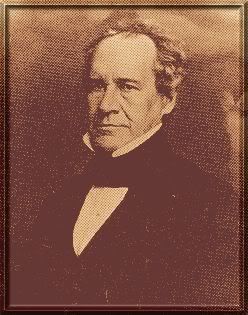 Charles Anthon was admitted to Columbia College while still a boy. At the age of thirteen, young Anthon "was awarded so many distinctions that his name was withdrawn from competition." He was recognized as a genius by the age of fourteen. The state supreme court accepted him to the bar at twenty-two years of age. One year later he became adjunct professor of Greek and Latin at Columbia College. He was also proficient in French and German. He became well known in educated circles for his edition of Lempriere's A Classical Dictionary. [10] While preparing for the bar he had adopted the habit, which he retained for many years, of rising at 4 a. m. and devoting the early hours of the morning to his literary labors. A liberal allowance of his day was devoted to the study of languages. This was the quintessential "nerd," not a man of vanity or imprecision. [11]
Charles Anthon was admitted to Columbia College while still a boy. At the age of thirteen, young Anthon "was awarded so many distinctions that his name was withdrawn from competition." He was recognized as a genius by the age of fourteen. The state supreme court accepted him to the bar at twenty-two years of age. One year later he became adjunct professor of Greek and Latin at Columbia College. He was also proficient in French and German. He became well known in educated circles for his edition of Lempriere's A Classical Dictionary. [10] While preparing for the bar he had adopted the habit, which he retained for many years, of rising at 4 a. m. and devoting the early hours of the morning to his literary labors. A liberal allowance of his day was devoted to the study of languages. This was the quintessential "nerd," not a man of vanity or imprecision. [11]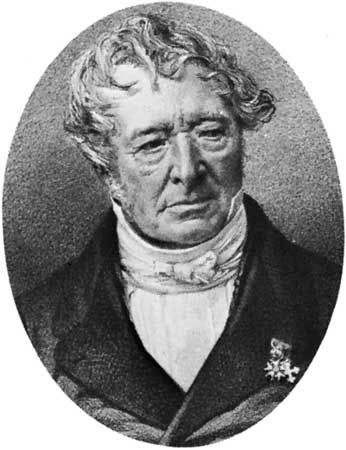 Jean Francois Champollion, a brilliant young linguist in France, began his attempt to decipher the Rosetta stone in 1808. Some bits of the writing, primarily numbers and some names, had been tentatively identified by scholars and linguists, who were still unsure whether hieroglyphics were a phonetic or ideographic written language. In 1821, Champollion had a breakthrough in which he recognized that hieroglyphics were primarily a phonetic written language. The next year he was able to present the idea to the French Acadamie des Inscriptions. [12] It has been proven that Charles Anthon was current on the research done by Champollion. Champollion's two-volume work, _Precis du Systeme Hieroglyphique_ (1824), was in Anthon's possession and at least a full year prior to the visit by Martin Harris, Anthon had studied and cited his findings. [13] Despite this, in 1828 Champollion had several years of work ahead to be able to actually read and understand hieroglyphics. He died suddenly of a stroke in 1832, at age 42. His study of Egyptian grammar was published in 1836, and his Egyptian dictionary in 1842 - both many years after Martin Harris's encounter with Charles Anthon. Until these books were published posthumously, no one was considered fluent in Egyptian hieroglyphics.
Jean Francois Champollion, a brilliant young linguist in France, began his attempt to decipher the Rosetta stone in 1808. Some bits of the writing, primarily numbers and some names, had been tentatively identified by scholars and linguists, who were still unsure whether hieroglyphics were a phonetic or ideographic written language. In 1821, Champollion had a breakthrough in which he recognized that hieroglyphics were primarily a phonetic written language. The next year he was able to present the idea to the French Acadamie des Inscriptions. [12] It has been proven that Charles Anthon was current on the research done by Champollion. Champollion's two-volume work, _Precis du Systeme Hieroglyphique_ (1824), was in Anthon's possession and at least a full year prior to the visit by Martin Harris, Anthon had studied and cited his findings. [13] Despite this, in 1828 Champollion had several years of work ahead to be able to actually read and understand hieroglyphics. He died suddenly of a stroke in 1832, at age 42. His study of Egyptian grammar was published in 1836, and his Egyptian dictionary in 1842 - both many years after Martin Harris's encounter with Charles Anthon. Until these books were published posthumously, no one was considered fluent in Egyptian hieroglyphics.Labels: Anthon transcript, Mormon history, Sunday School
Part 1 of a series on Martin Harris and the Anthon Transcript
"This paper was in fact a singular scrawl. It consisted of all kinds of crooked characters disposed in columns, and had evidently been prepared by some person who had before him at the time a book containing various alphabets. Greek and Hebrew letters, crosses and flourishes, Roman letters inverted or placed sideways, were arranged in perpendicular columns, and the whole ended in a rude delineation of a circle divided into various compartments, decked with various strange marks, and evidently copied after the Mexican Calender given by Humboldt, but copied in such a way as not to betray the source whence it was derived." [1]
"The characters were arranged in columns, like the Chinese mode of writing, and presented the most singular medley that I ever beheld. Greek, Hebrew and all sorts of letters, more or less distorted, either through unskilfulness or from actual design, were intermingled with sundry delineations of half moons, stars, and other natural objects, and the whole ended in a rude representation of the Mexican zodiac." [2]
 Pictured at left are a pictorial horoscope chart and a Mexican calendar stone. A Mexican calendar stone was rediscovered in 1791 and Anthon, with his fascination for antiquities, would surely have been familiar with it. But to me the description seems reminiscent of the hypocephalus which Joseph Smith would later obtain from Michael Chandler and include as Facsimile #2 in the Pearl of Great Price Book of Abraham. However, Chandler did not obtain his mummies until 1833, and did not bring them to Kirtland until 1835. Actual historical events and coincidences of this period seem so fantastic that Joseph's metaphysical claims almost pale in comparison.
Pictured at left are a pictorial horoscope chart and a Mexican calendar stone. A Mexican calendar stone was rediscovered in 1791 and Anthon, with his fascination for antiquities, would surely have been familiar with it. But to me the description seems reminiscent of the hypocephalus which Joseph Smith would later obtain from Michael Chandler and include as Facsimile #2 in the Pearl of Great Price Book of Abraham. However, Chandler did not obtain his mummies until 1833, and did not bring them to Kirtland until 1835. Actual historical events and coincidences of this period seem so fantastic that Joseph's metaphysical claims almost pale in comparison.
 Though this document is not the original, it almost certainly represents characters either copied from the plates in Joseph Smith's possession or copied from the document carried by Harris. Twice in late 1844, after the Prophet's martyrdom, portions of these symbols were again published as characters that Joseph Smith had copied from the gold plates. Characters appeared in the December 21 issue of the Mormon newspaper The Prophet. Also, in 1844 the Latter-day Saints published a broadside with the title "Stick of Joseph" which contained supposed characters copied from the plates. [4] These are somewhat different from the Anthon transcript. We don't know who prepared this 1844 sheet.
Though this document is not the original, it almost certainly represents characters either copied from the plates in Joseph Smith's possession or copied from the document carried by Harris. Twice in late 1844, after the Prophet's martyrdom, portions of these symbols were again published as characters that Joseph Smith had copied from the gold plates. Characters appeared in the December 21 issue of the Mormon newspaper The Prophet. Also, in 1844 the Latter-day Saints published a broadside with the title "Stick of Joseph" which contained supposed characters copied from the plates. [4] These are somewhat different from the Anthon transcript. We don't know who prepared this 1844 sheet.Labels: Anthon transcript, Book of Mormon, Mormon history, scripture, Sunday School